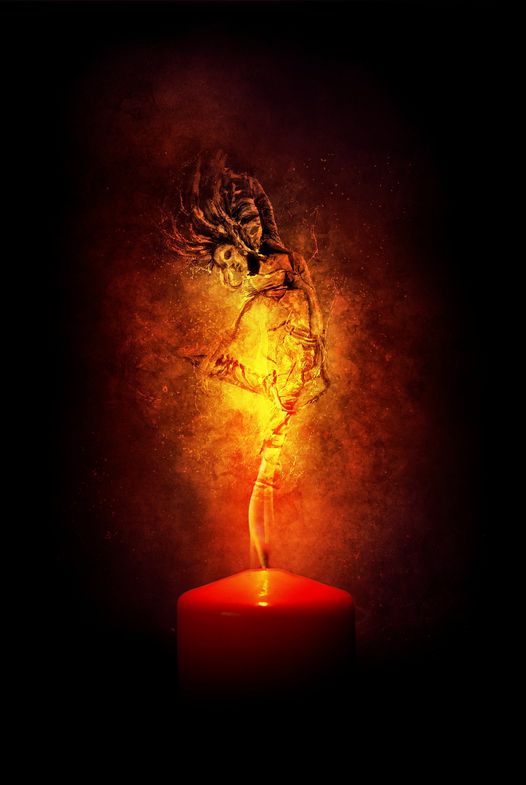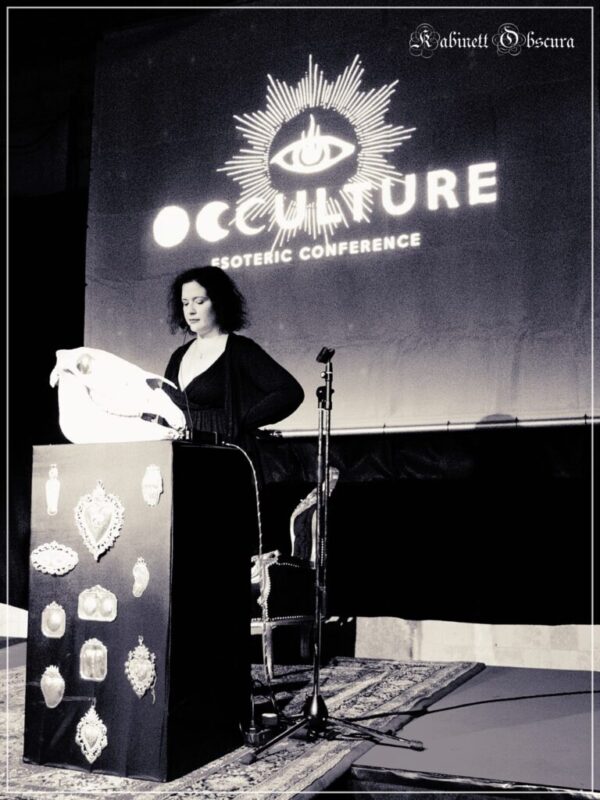A short note on the function of ritual ecstasy
While the term ‘ecstasy’ is almost always defined as ‘outside-of-oneself’, the concept has received a range of meanings and connotations throughout its use in philosophy, everyday speech or religious studies. A single blog post can hardly scratch on the surface of this topic but I would like to offer a very brief contemplation on the function of ecstatic states in contemporary ritual work – and this, I believe, fits quite neatly with some of my previous (and probably future) posts.
As a common basis I would define ‘ecstasy’ rather loosely as a (temporary) altered state of consciousness that might include physical and emotional sensations like rapture, euphoria and/or visions, as well as a loss of self (-control) and/or awareness. Ecstasy is a state out of (and opposed to) the ordinary. Especially in a religious setting it becomes a spiritual experience of the divine, the numinous, the supernatural… Using ecstatic techniques in ritual context is aimed at achieving such an extraordinary experience, the exact details of which are in turn usually dependent on frame and context.
In the context of modern day spiritual/esoteric/new age followers of such methods in the West, for example in form of neo-shamanic workshops and the implementation of drumming, ‘tribal’ dances or chanting, the main function of these ecstatic techniques and experiences has been described as either an attempt at suspending a feeling of alienation/estrangement and/or of perceived external heteronomy.1Compare: Zinser, H.: “Ekstase und Entfremdung. Zur Analyse neuerer ekstatischer Kultveranstaltungen.” In: Zinser (Hg.). Religionswissenschaft. Eine Einführung. Berlin: Dietrich Reimer Verlag, 1988. What does that mean? In the first case, the practitioner feels alienated or estranged in everyday life, not only from other people, society or nature, but also from his/her own desires, body and powers. There is no sense of connection, but rather a feeling of isolation and imbalance. This person now seeks an experience of ecstasy in context of a setting (like the neo-shamanic ritual workshop) that is providing him/her with corresponding goals like for example ‘we are all one’, ‘reconnect with nature’, ‘experience the depth of your consciousness’. These pre-set environments also provide the interpretation for the experience/ecstasy and he/she will for a blissful while feel less alienated and in harmony and unity with the divine/everything instead.
In the second case, where the cause for seeking ecstatic experiences is a feeling of (perceived) external heteronomy, the practitioner feels less self-determined, kind of powerless, as if they have less and less control over their life (in which even leisure time activities are suspicious of being ‘controlled’ or determined by certain industries, social values etc.). Therefore, he/she wants to use the self-chosen, intentional experience of something outside of the ordinary, the ‘thrill’ of an ecstatic experience to transcend the meaninglessness of everyday life. In both cases I do not see the initial motivation, i.e. a feeling of alienation and/or heteronomy, as necessarily problematic – many Gnostics can traditionally relate to such feelings (e.g. the alienation from a world ruled by archontic powers). But the ecstatic techniques are then (in this modern context) used for nothing else than a form of escapism: the ecstatic experience (if it even happens) becomes (only) a means to overcome ordinary everyday life and profanity, including its pains and woes, for the limited time-span of the ‘ritual’ – instead of a means to actually change that everyday reality.
And, from the perspective of initiation, this is exactly what the ecstatic ritual should ultimately be about: bringing about lasting change of the reality we find ourselves in; To use ecstasy in ritual as a means to not only access the magical reality, the living actuality of interacting souls, but also then to draw this supra-ordinary reality, this ‘ecstatic consciousness’ into our ‘everyday ‘reality’ – and through it change its status quo. When a traditional shaman or medicine man, for example, uses ecstatic techniques to achieve a certain state of consciousness, in order to communicate or traffic with the spirits, the souls of the ancestors or other daemonic entities, they most commonly do this in an attempt to restore an order that has been disrupted. The shaman may need to restore the health of a patient or care for the well-being of the community after a disaster. The experience (e.g. the travel to the land of the ancestors or the possession by a particular spirit) is not used to escape the situation of disruption or false order but to face it and to bring about lasting change. It is neither used solely to feel at one with nature or the spirit-world or the like because to the (traditional, ‘primitive’) shaman this is still the ordinary; i.e. the supernatural or the numinous that is accessed intentionally with the ecstatic rite is/has been always a part of his/her normal environment, just on a plane which necessitates special technologies of perception and contact.
To the Kosmic Gnostic this natural state where ordinary and supra-ordinary experience inform each other has been disrupted by the radical tyranny of the Spirit/rational consciousness in humans and it is in and through ecstasy (or ekstasis) that Soul can liberate itself from this spirit-ual oppressor.2Compare Klages, Ludwig. Of Cosmogonic Eros. Theion Publishing: München, 2018. Chapter IV. ‘Ek-stasis’ taken literally means to go “out of” “stasis”. It denotes a dis-placement but can easily be read (through a Kosmic Gnostic lens) as going out of a static being and into the dynamic becoming that is the reality of kosmic, pandaemonic Life. Ecstasy then implies to leave the heteronomy of ‘Spirit’ and enter (and restore!) the hegemony of the Cosmogonic Eros: “May Eros then reign who engendered it all!”3Goethe, Faust II, as quoted in Ludwig Klages, Of Cosmogonic Eros. Theion Publishing: München, 2018.




1 thought on “Ek-Stasis”